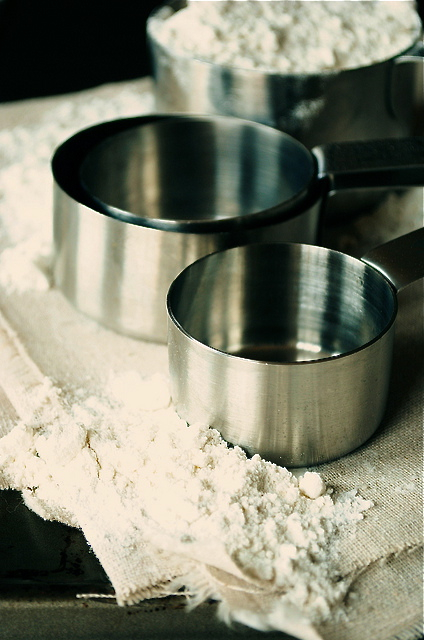Why do some recipes and cookbooks tell us to “sift flour” and other dry ingredients? As flour sits, it slowly settles and becomes more compacted. Sifting breaks up clumps, adds air to the flour, helps produce lighter cakes and pastries and makes measurements more uniform.
Plus, a cup of sifted flour generally weighs 20-25 percent less than a cup of flour that has settled. This is a huge difference and can significantly affect the results of various pastries.
It’s also a good idea to sift flour if you are combining it with other dry ingredients, such as salt, baking powder or soda and other powder substances. This is done by placing all of the dry ingredients into a bowl, stirring and then sifting them together. Sifting incorporates air into the ingredients, making them lighter.
There are a number of ways to sift flour:
- Use a sifter specifically designed for the job (pictured above) – Fill the sifter with flour and either shake or squeeze the handle. Make sure the flour lands in a bowl, onto a surface covered with wax paper or into a measuring cup.
- Use a fine mesh sieve – Place the flour in a mesh sieve and shake it gently, allowing the flour to flow through and into a bowl, onto a surface covered with wax paper or into a measuring cup.
Word of caution: If your recipe calls for “one cup sifted flour” this means that you sift the flour before measuring. If your recipe calls for “one cup flour, sifted” this means that you sift the flour after measuring.
Don’t have a sifter or a sieve? Don’t worry…use one of the following methods below:
- Shake the bowl – Gently shake the bowl of flour to introduce air
- Toss like a salad – Lightly lift the flour up into the air with spoons and let it drop back into the bowl
- Use a strainer – Stir with a fork and then use a strainer or colander to sift
- Whisk – Use a wire whisk or fork to whisk the flour
You might notice that some flour packages today are labeled as pre-sifted. This means that the flour was actually sifted prior to packaging. However, due to shipping and handling the flour gets compacted and is usually no longer sifted by the time it gets into your kitchen.
Quite a number of recipes call for sifted flour (often older recipes) and a lot don’t. This is because some commercially-produced flour today enables it to have a more even, consistent texture which can make sifting unnecessary. Therefore, a lot of people often skip the step altogether. I generally sift when recipes call for it. What do you tend to do?







This is a great post because you explain the 'why'. By understanding these points, you raise your cooking game and everything turns out better. Thanks!
Thank you! I'm so happy to hear that you enjoyed the post! I tried to hit on all of the important points. On certain recipes, sifting is a must, especially if you want the perfect outcome!
How fun, I have that same napkin from Cost Plus World Market!! Love that place! Great post!
Love these informative posts!
I sift my flour and dry ingredients and I think it makes a difference in the baked good for the better. I have a battery operatored sifter and I love it!
This is another really informative post. It's a must-read for any baker.
Very informative post–thanks!
You are always teaching me something I didn't know…thanks!
Thank you very much, my recipe calls for sifted flour, and I have never understood what that meant, so I decided to look it up, and was grateful to find your in depth answer how-to
Thank you I’ve always wondered I thought that might be the reason, now I know for sure!
Firstly, thanks for sharing this amazing information. I like this post. By the way, I made banana bread for the first time and didn’t sit or whisk the flour, just stored with fork. It turned out pretty good, but I bet it would have been lighter if I had sifted or whisked the flour first.